In the mountains of Yilan, far from the confines of everyday life, people gather during the holidays to celebrate. Outlandish costumes are the norm. The fashion styles run from Mad Max-inspired outfits, to anime cosplay, along with colorful makeup and dresses for both men and women.
It’s time for the Turtle Burn, the official “regional Burn” of Taiwan. This is a spinoff of Burning Man, the world’s largest art and music festival held annually in Nevada. For one week a year, over 70,000 people camp out in Black Rock Desert to attend this seminal countercultural event. All over the world, there are also smaller regional Burns, and the Turtle Burn will be a more intimate affair, capping at 150 people.
Although the main Burning Man event was canceled last year due to COVID-19, the Turtle Burn did have a successful opening in 2019 and plans to continue annually. The latest will be from April 2 to April 5, over the Tomb-Sweeping Festival holiday weekend.
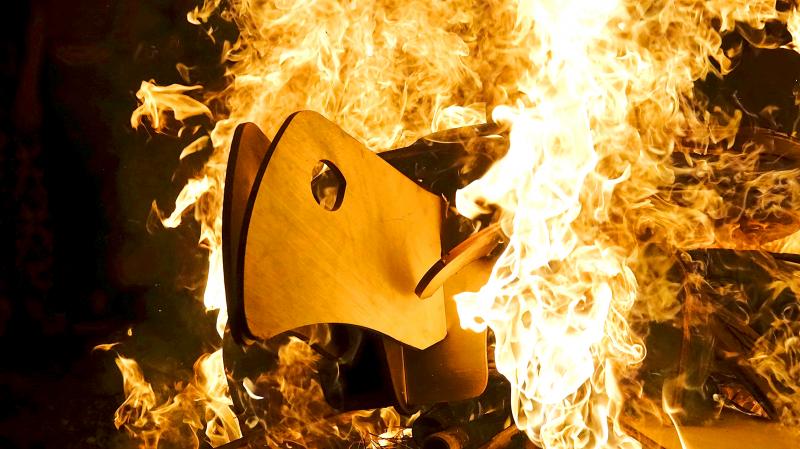
Photo courtesy of Tobie Openshaw
The site is filled with several “theme camps,” which groups organize in order to spend time with likeminded friends and to pool resources together. One is the Tavern of Truth, headed by Kate Panzica, which holds a free bar to give drinks to everyone who strolls by.
“Educating both foreigners and locals on the Ten Principles is a net positive,” Panzica says. “I think it’s great for folks to explore themselves and what they want to be in the ‘default world’ as well as a Burn.”
The Ten Principles of Burning Man, written by late founder Larry Harvey in 2004, are: Radical inclusion, gifting, decommodification, radical self-reliance, radical self-expression, communal effort, civic responsibility, leaving no trace, participation, and immediacy.
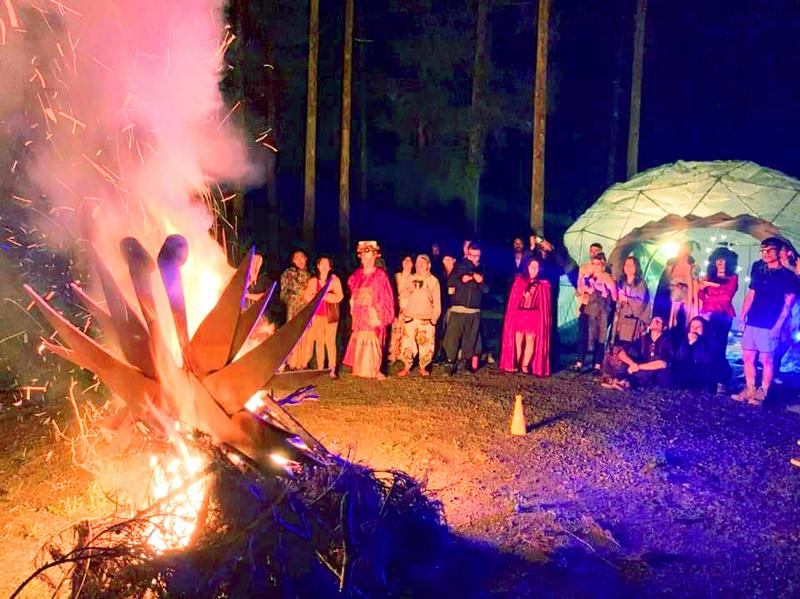
Photo courtesy of Sean Su
These guidelines help to make the event stay as ethical as possible, and people are encouraged to clean up after themselves and promote sustainable living. Radical self-reliance refers to how attendees must bring their own food, cookware, tents and other camping supplies. People are encouraged to contribute to the culture by building their own artistic creations, whether individually or as part of a group. And after the event is over, they must make sure to leave no trace by cleaning up all “MOOP” — matter out of place.
For four days the Turtle Burn will hold a variety of workshops and activities. The gifting principle doesn’t just refer to handing out free drinks or personalized jewelry, although that is also common. It can also be expressed by giving one’s time by hosting workshops.
In the past, these workshops have included improv comedy sessions, where participants learn to play and practice their comedic skills, yoga classes for keeping fit, lip-singing performances, fashion shows on a makeshift runway and even impromptu puppet shows. Some camps contribute at meal-times, cooking pancakes or grilled cheese sandwiches to share with the entire community. At night, fire-dancers are a particular attraction of any Burn, dancing to the beat of electronic music and entertaining others as they express their craft.
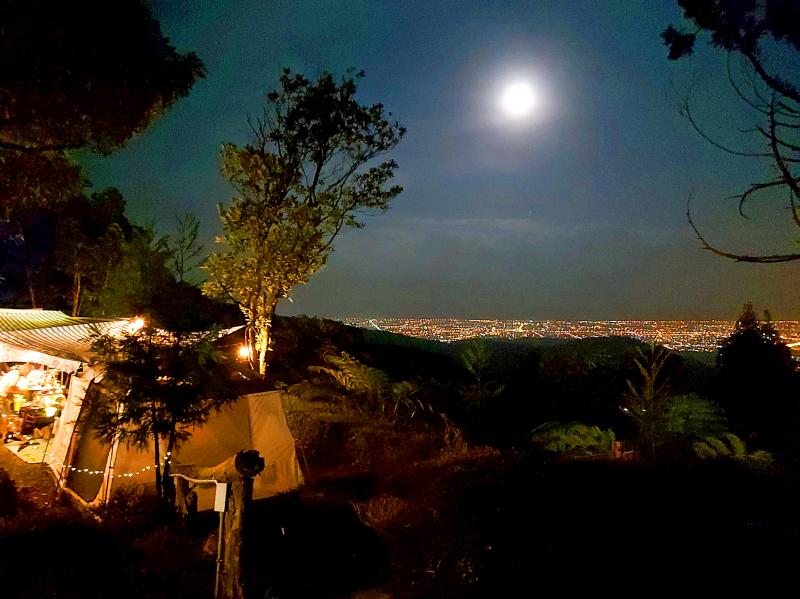
Photo courtesy of Bronwen Shelwell
“I was part of the Queen of Hearts camp,” said Michi Fu, sharing her experiences. “We had a shared costume closet with a full-length mirror to encourage radical self-expression through costuming. I sang with my furry, lavender bunny ears and turquoise silk robe and we all had hand-cranked ice cream.”
On the final night, tradition dictates that a wooden effigy is to burn. This started in 1986 at the very first Burning Man in San Francisco, as a symbol of how to keep the creative “fire” burning on even after the event concludes. At the Turtle Burn, a two-meter wide wooden turtle sculpture is scheduled to be set aflame. Dale Albanese, Taiwan’s official Burning Man contact, said of the installation: “There’s a sense of buildup and tension, and this sudden quietness and a collective shared spirit. You hear the oohs and the aahs at similar times. There’s a kind of shared attention. We’ve all been busy doing our own thing, and then there’s a pause. A reset. It’s also a moment to open up and say it wasn’t just about me.”
As 150 artists and performers gather their community together to continue the Turtle Burn tradition, they are also planning for next year and beyond. Tickets for this year’s event have already sold out but there is a waiting list. For more information, visit: turtleburn.com.
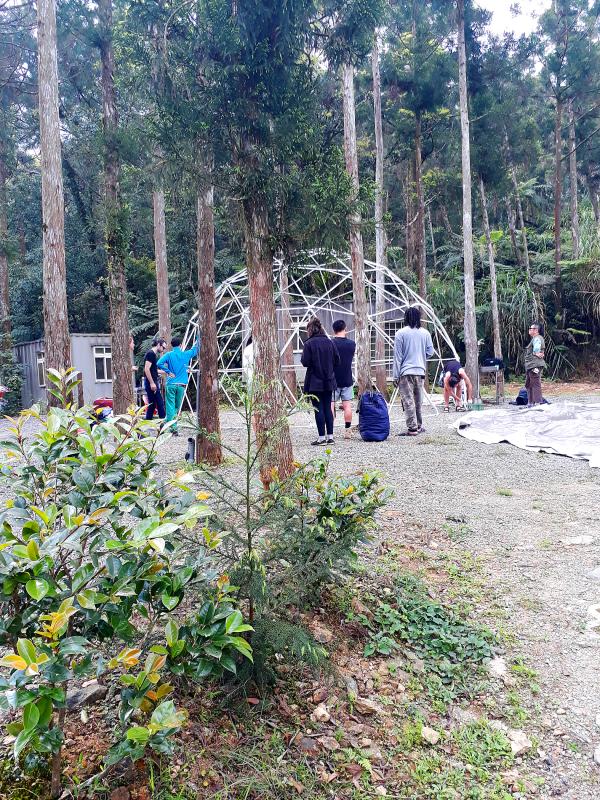
Photo: Ray Hecht
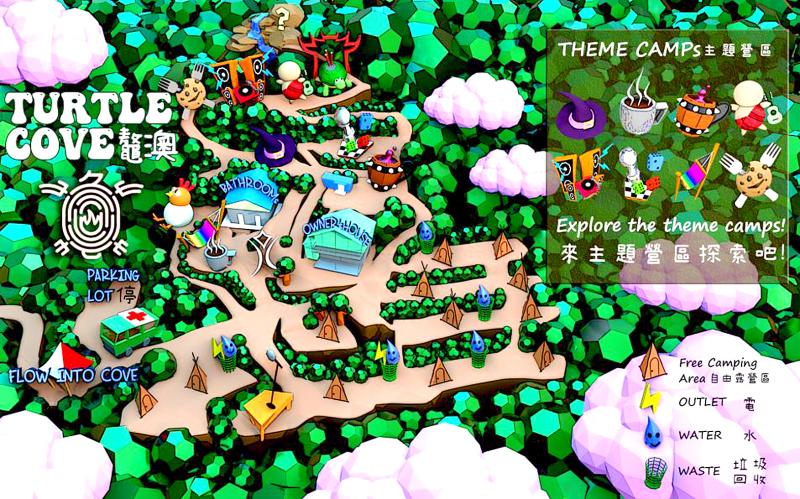
Photo courtesy of Turtle Burn

This month the government ordered a one-year block of Xiaohongshu (小紅書) or Rednote, a Chinese social media platform with more than 3 million users in Taiwan. The government pointed to widespread fraud activity on the platform, along with cybersecurity failures. Officials said that they had reached out to the company and asked it to change. However, they received no response. The pro-China parties, the Chinese Nationalist Party (KMT) and Taiwan People’s Party (TPP), immediately swung into action, denouncing the ban as an attack on free speech. This “free speech” claim was then echoed by the People’s Republic of China (PRC),

Exceptions to the rule are sometimes revealing. For a brief few years, there was an emerging ideological split between the Democratic Progressive Party (DPP) and Chinese Nationalist Party (KMT) that appeared to be pushing the DPP in a direction that would be considered more liberal, and the KMT more conservative. In the previous column, “The KMT-DPP’s bureaucrat-led developmental state” (Dec. 11, page 12), we examined how Taiwan’s democratic system developed, and how both the two main parties largely accepted a similar consensus on how Taiwan should be run domestically and did not split along the left-right lines more familiar in

Many people in Taiwan first learned about universal basic income (UBI) — the idea that the government should provide regular, no-strings-attached payments to each citizen — in 2019. While seeking the Democratic nomination for the 2020 US presidential election, Andrew Yang, a politician of Taiwanese descent, said that, if elected, he’d institute a UBI of US$1,000 per month to “get the economic boot off of people’s throats, allowing them to lift their heads up, breathe, and get excited for the future.” His campaign petered out, but the concept of UBI hasn’t gone away. Throughout the industrialized world, there are fears that

Most heroes are remembered for the battles they fought. Taiwan’s Black Bat Squadron is remembered for flying into Chinese airspace 838 times between 1953 and 1967, and for the 148 men whose sacrifice bought the intelligence that kept Taiwan secure. Two-thirds of the squadron died carrying out missions most people wouldn’t learn about for another 40 years. The squadron lost 15 aircraft and 148 crew members over those 14 years, making it the deadliest unit in Taiwan’s military history by casualty rate. They flew at night, often at low altitudes, straight into some of the most heavily defended airspace in Asia.